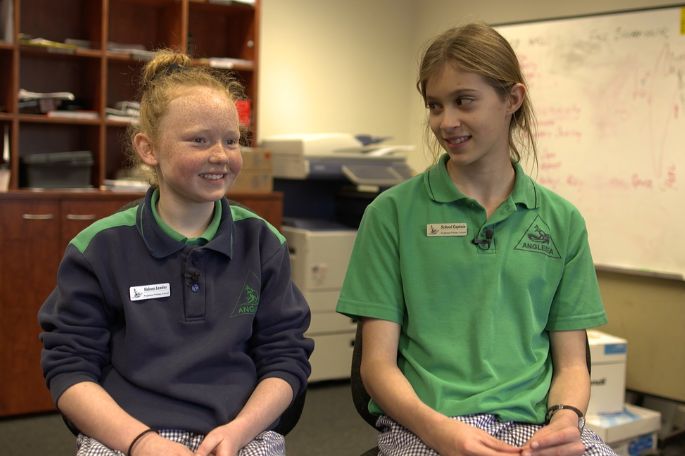Lesson summary
In this lesson, students will learn how to make productive decisions in an emergency situation. Students will begin by quickly writing a list of items they would pack if they needed to leave their home due to an emergency. They will reflect on their choices then take time to write a well-considered packing list. They will then draw a site plan of where they live and label it with tasks or items that need addressing to prepare their home for a natural hazard. The class will conduct an audit of the school’s emergency procedures, suggest revisions for clarity, then conduct an evacuation drill.
The lessons in this unit are designed to inform students about natural hazards in the local environment and ways to reduce risk, prepare, respond and recover from a disaster or emergency.
Learning intentions:
Students understand...
- the purpose of planning for an emergency evacuation
- the steps they can take to prepare their property for a natural hazard
- the importance of clear, easy to find instructions during an emergency.
Success criteria:
Students can...
- identify essential items to take during an emergency
- reflect on their own readiness for a natural hazard
- evaluate ways to prepare their home for a natural hazard
- audit emergency procedures for clarity of instructions.
Lesson guides and printables
Lesson details
Curriculum mapping
Australian Curriculum content descriptions:
Year 7 Geography:
- Causes, impacts and responses to an atmospheric or hydrological hazard (ACHGK042)
- Present findings, arguments and ideas in a range of communication forms selected to suit a particular audience and purpose; using geographical terminology and digital technologies as appropriate (ACHGS053)
Year 8 Geography:
- Causes, impacts and responses to a geomorphological hazard (ACHGK053)
- Present findings, arguments and ideas in a range of communication forms selected to suit a particular audience and purpose; using geographical terminology and digital technologies as appropriate (ACHGS061)
Years 7 & 8 Health and Physical Education:
- Practise and apply strategies to seek help for themselves or others (ACPPS072)
- Investigate and select strategies to promote health, safety and wellbeing (ACPPS073)
- Evaluate health information and communicate their own and others’ health concerns (ACPPS076)
- Analyse factors that influence emotions, and develop strategies to demonstrate empathy and sensitivity (ACPPS075)
- Plan and use health practices, behaviours and resources to enhance health, safety and wellbeing of their communities (ACPPS077)
Years 7 & 8 Civics and Citizenship:
- Appreciate multiple perspectives and use strategies to mediate differences (ACHCS057, ACHCS071)
- Use democratic processes to reach consensus on a course of action relating to a civics or citizenship issue and plan for that action (ACHCS058, ACHCS072)
Syllabus outcomes: GE4-2, GE4-3, GE4-4, GE4-5, GE4-8, PDHPE4.2, PDHPE4.3, PDHPE4.6, PDHPE4.7, PDHPE4.8, PDHPE4.9, PDHPE4.10, PDHPE4.11, PDHPE4.12, PDHPE4.13, PDHPE4.16
General capabilities: Literacy, Critical and Creative Thinking
Cross-curriculum priority: Sustainability
Relevant parts of Year 7 Geography achievement standards:
Students explain interconnections between people and places and environments and describe how these interconnections change places and environments. Students present findings and arguments using relevant geographical terminology and digital technologies in a range of communication forms.
Relevant parts of Year 8 Geography achievement standards:
Students explain interconnections within environments and between people and places and explain how they change places and environments. Students present findings, arguments and ideas using relevant geographical terminology and digital technologies in a range of appropriate communication forms.
Relevant parts of Years 7 & 8 Health and Physical Education achievement standards:
They investigate strategies and practices that enhance their own, others’ and community health, safety and wellbeing. They demonstrate skills to make informed decisions and propose and implement actions that promote their own and others’ health, safety and wellbeing.
Relevant parts of Years 7 & 8 Civics and Citizenship achievement standards:
When planning for action, students take into account multiple perspectives, use democratic processes, and develop solutions to an issue. They identify ways they can be active and informed citizens in different contexts.
This lesson is part of the wider unit of work Disaster Resilience Education – Years 7 & 8
Time required: 70 mins
Level of teacher scaffolding: Medium – facilitate class discussion, lead students in activities
Resources required
- Device capable of presenting videos to the class
- RediPlan Resource – printed or provided to students and parents online
- School emergency and evacuation procedures
- Student Worksheets – one copy per student
Skills
This lesson is designed to build students’ competencies in the following skills:
- Communication
- Community engagement
- Critical thinking
- Empathy
- Initiative
- Problem solving
- Collaboration
Additional info
These lessons were designed in consultation with the Australian Institute for Disaster Resilience.


Welcome back!
Don't have an account yet?
Log in with:
By signing up to Cool.org you consent and agree to Cool's privacy policy to
store, manage and process your personal information. To read more, please see
our privacy policy here(Opens in new tab).
Create your free Cool.org account.
Many of our resources are free, with an option to upgrade to Cool+ for premium content.
Already have an account?
Sign up with:
By signing up to Cool.org you consent and agree to Cool's privacy policy to
store, manage and process your personal information. To read more, please see
our privacy policy here(Opens in new tab).